SWEET Next To Largest Steiff Mohair Young Zebra Brother ID 1953 To 1962 ONLY
$229.00 Original price was: $229.00.$97.99Current price is: $97.99.
- Quality You Can Count On
- 100% High-Quality Guarantee
- 7 days free returns
- We take quality seriously.

The Steiff zebras, in general, are hard to come by, especially in the two largest sizes (this one is the second largest). In the more than two decades I have been helping Steiff animals find new homes, I have helped only three other 28-cm mohair zebras relocate. Therefore, I am delighted to have this opportunity, especially with such a nice instance of this rare boy.
Unlike the two smaller sizes of the zebra (the smaller of those being velveteen), who were around until the 1970s, the two big guys were not made after 1962. That is the main reason they are so hard to find.
This zebra had one or the other of two article numbers stamped on is flag—either 6328,0 or 6328,00. The former series was made between 1953 and 1958, and the latter one was made between 1959 and 1962. The “28” in both numbers denotes Zebra’s catalogued size in centimeters, and he is just a bit under that size, measuring 26.4 cm. to the top of his mane, or just over 10 inches.
Note that Zebra stands on tip toe, as do the Steiff llamas and dromedaries. Despite this design feature, Zebra’s stance is absolutely stable. By the way, this size zebra is the only one with applied felt hooves; the other sizes, including the very largest, all have hooves that are airbrushed black, but they are just a continuation of the mohair on the rest of their legs.
Zebra is in very good condition, and I mean DESPITE his age (and play), not “for” his age. I rate all my Steiff critters on the same absolute scale no matter when they were made. He has two tiny condition issues, neither of which is evident when he stands on display. One is what I believe is a moth nibble under his chin—which you can see in my fifth composite image, and you can see how tiny it is. The other issue, which you, most certainly, can’t see, is his non-working squeaker. When Zebra sweetly looks back at you from your vitrine with that wonderful cocked head and glass eyes, you would not know whether he made a sound or not.
Zebra’s coloring is just as it should be, with (unfaded) black stripes on a tan body and tail. The hair on his mane and inside his ears is white. He retains some black airbrushed accents in his ears. At one time, there were also rose-colored accents inside his ears, but they are now gone. I know this because the zebra who lives in my vitrine still has some. This lack is really trivial, but with the tiny moth nibble, I decided that I could not quite rate his condition as “excellent,” but maybe I should add a “plus” to the “very good.” 😉
Coloring and mohair coverage are the two main condition issues I evaluate in my animals (if they are covered in mohair of course). Not only is Zebra’s close-cropped mohair virtually complete, but the long black mohair “puff” at the end of his tail is complete (and lustrous) as well.
I already explained the “28” in Zebra’s article number, but the first digit, the “6,” tells you something too. That is Steiff’s code for a young animal, and, as always, they managed to capture that look so well.
I can’t think of anything else to tell you, but please write if you have a question. Everyone should have at least one zebra in his or her collection, and this guy would be a really special addition.
WHATEVER YOU DECIDE TO DO ABOUT ZEBRA OR ANY OF MY OTHER STEIFF ITEMS, PLEASE BE SURE TO SEE THE ARTICLE I HAVE WRITTEN ABOUT STEIFF ID FRAUD—INCLUDING COUNTERFEIT CHEST TAGS—(AND OTHER IMPORTANT INFORMATION FOR COLLECTORS). YOU WILL FIND THE LINK ON THE BOTTOM RIGHT OF MY SHOP HOME PAGE UNDER “FAVORITE LINKS.” IF YOU HAVE NOT LOOKED AT IT RECENTLY, I UPDATED AND EXPANDED IT IN DECEMBER, 2022.
| ITEM ID | rl-2853 |
|---|---|
| COLOR | Beige, Black, White |
| ITEM TYPE | Vintage |
| FINE PLUSH AGE | Post 1950 |







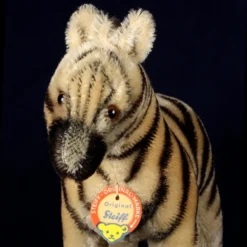




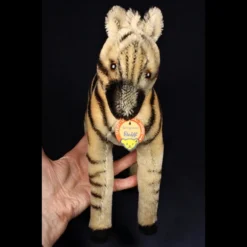



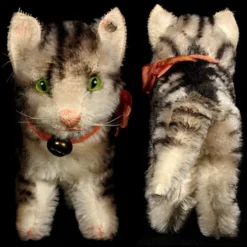
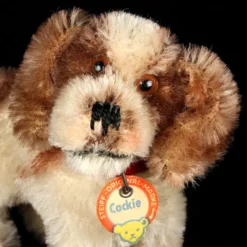
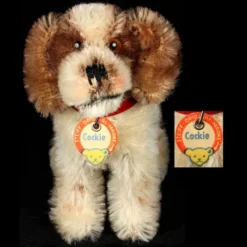



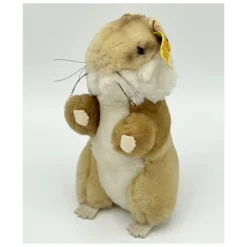


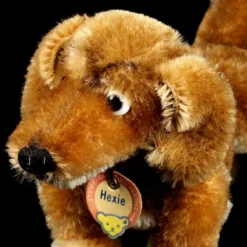
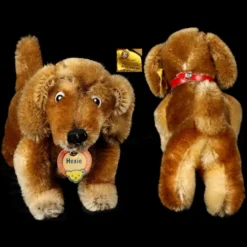
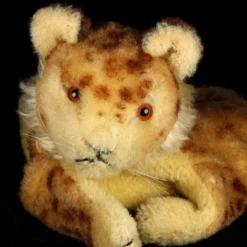

Reviews
There are no reviews yet.